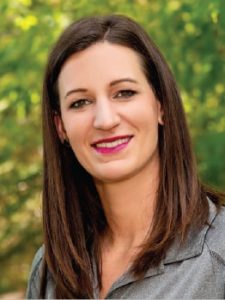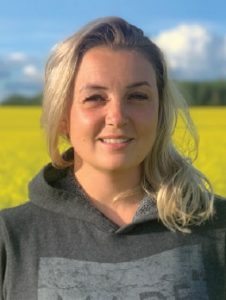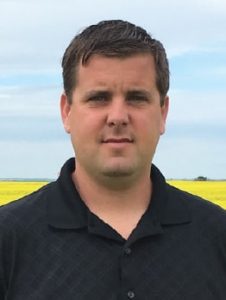Who does your marketing?
 Chuck Fossay
Chuck Fossay
Starbuck, Manitoba
Chuck Fossay says a farmer can be a good producer, a good manager or a good marketer. “Rarely do you find someone who is good at all three,” Fossay says. “So, as farmers, we have to find what we can do really well and get advisers to help with the other jobs.”
Fossay farms with his three brothers. They share equipment and some storage, and work together to seed and harvest their crops, but they have their own land and, for the most part, do their own grain marketing.
“We see each other every day through the busy season and a few times a week through the winter, and we share offers received from elevators, any transactions we’ve done and marketing tips we’ve heard,” Fossay says. But then each brother makes his own final decisions.
Although Fossay has taken a lot of marketing programs over the years, he subscribes to AgChieve’s marketing newsletter to get some of that valuable outside expertise. “David Drozd is basically a neighbour and I’ve known him for 35 or 40 years,” he says.
With the programs and outside advice, Fossay takes a rather streamlined approach to marketing: Watch the charts. Look for a good price. Lock in a bit when charts and outside advice suggest it. “I don’t go in for a lot of fancy marketing,” he says, “but I will watch futures charts fairly closely so I’m not caught by surprise.”
One thing David Drozd taught him is that the market knows all the reports about trade issues, weather events and harvest productivity and has built these observations into the price, probably before anyone else has heard about them – “even with social media.” So futures market prices are a good indicator of what’s happening in the world.
“When you get an arm’s length recommendation to pre-sell 20 per cent at a decent pricethen I try to take that advice.”
Having a trusted adviser also takes some of the emotion out of his marketing decisions, Fossay says. “When you get an arm’s length recommendation to pre-sell 20 per cent at a decent price, then I try to take that advice. That way I have my fall cash flow needs covered without forcing a harvest sale at what is often the lowest prices for the year.”
However, by watching charts instead of sticking to usual trends, Fossay observed in late August 2020 that the typical harvest drop off wasn’t happening. “Here we are with markets trending up,” he says. “With an upward trend, I usually wait until the charts start to go sideways, then I make a move.”
 Katelyn Duncan
Katelyn Duncan
Regina, Saskatchewan
Katelyn Duncan farms with her sister, Mary Jane, and her father. They subscribe to a few marketing newsletters, including those from John DePutter, Larry Weber and Keith Ferley, for updates on futures trends and global production, but the farm’s chief marketer is Mary Jane.
“She is much more interested in marketing, in general, so she took over the marketing role from dad,” Katelyn says. “We want to be comfortable in our roles, be energized and enjoy the work. If we’re doing tasks we want to be doing, it is better in the long run for everybody.”
The farm’s executive team, comprised of the three Duncan family shareholders, sets the marketing strategy. This includes growing some specialty canola to offset a little bit of the market risk. They follow the market advisers when it comes to suggestions on what percentage of the crop should be sold be a certain time, for example. They also have quick “farm executive chats” to consider new quotes from grain buyers. Otherwise Mary Jane is in charge of day to day marketing of the farm’s production.
This division of labour suits their geographies. Mary Jane lives two hours away, at Coronach, SK. While she spends seeding and harvesting seasons on the farm, she can complete marketing transactions by computer and phone any time of year from her home.
“We want to be comfortable in our roles, be energized and enjoy the work. If we’re doing tasks we want to be doing, it is better in the long run for everybody.”
Katelyn notes that if they didn’t have a keen and competent marketer on the executive team, they would pay a broker or a grain marketing firm to do the job. For example, they used to hire outside agronomy services, now Katelyn is the farm agronomy lead. When it comes to machinery maintenance, they have a full-time employee who specializes in small repairs and detailed combine inspections, but big jobs go to the dealerships.
The marketing plan for 2020 won’t have any major changes. “Canola yields might be a little lower than what we planned for when we forward-sold, but otherwise it will be the status quo,” Katelyn says.
 Christi Friesen
Christi Friesen
Brownvale, Alberta
Christi Friesen and her husband Kelly use Cargill’s MarketSense as their main marketing resource. It provides daily market updates from Cargill’s lead analysts, and two local advisers help with marketing plans and actions for the farm. One local advisor visits the farm for regular consultations (now done through an online meeting platform like Microsoft Teams) and the other puts the marketing orders into action.
As part of the regular consultations, the local MarketSense adviser looks at every aspect of the business, including machinery costs, power bills and all other inputs, to come with a precise farm-specific cost per acre for each crop.
“As young farmers starting out on our own, this program has been amazing,” Friesen says.
The marketing recommendations are based on the farm’s business plan, which includes debt servicing and cash flow needs unique to their operation. The program combines business plan objectives with market outlooks from the lead analysts and local pricing opportunities uncovered by the local advisors to come up with recommendations on when to sell and how much. “Our advisor will make specific recommendations, like you should be 50 per cent sold for new crop based on this trend and this trend and this trend,” she says. “We always use forward contracts for the sense of security.”
“Our advisor will make specific recommendations, like you should be 50 per cent sold for new crop based on this trend and this trend and this trend.”
The local Cargill elevators get most of their deliveries, but Friesen says they’re not required to sell everything through Cargill.
Although Friesen says her husband Kelly is the marketing lead for the farm, she takes part in all the consultation meetings and knows the plan. She recently look part in a women-only marketing course called Market Gals, offered through MarketSense. “It was a pilot program. There were only three of us and the instructor was a woman,” she says. Among other things, it taught her how to read charts (she uses barcharts.com), layer data and use this information to identify good opportunities to make a sale.
These fundamentals help take some of the emotion out of marketing, she says. “If you’re passionate about the farm, you put your emotions into everything – but you can’t market your livelihood based on emotion,” she says. “You have to market based on facts.”
 Dean Roberts
Dean Roberts
Coleville, Saskatchewan
Dean Roberts has what he calls an “opportunistic” approach to marketing. Roberts farms with his father, uncle and cousin, and while they’re all involved in making the final marketing decisions, he is the farm’s marketing lead. Farm logistics and readiness are a big part of their marketing action plan.
“Our yard has good gravel and we keep it cleared. As long as the municipal roads are passable, trucks can get in and out of our yard,” Roberts says. “So if an elevator makes a good offer for a quick delivery of 20,000 bushels, they can come and get it as soon as they need it.”
For marketing help, Roberts subscribes to newsletters from Grain Shark and FarmLink Marketing Solutions. The two sources are a little different, he says. “Grain Shark tends to rely more on technical signals while FarmLink seems to rely more on supply and demand fundamentals.”
“If they both say to sell, then we’ll probably sell,” he says. “Or if my gut says sell and one of the newsletters says sell, that’s good enough for me.”
“I believe we get better results when we have our marketing rep with us.”
To manage cash flow, the Roberts farm will set up monthly instalments on financing so they never need a big influx of cash to cover an annual or semi-annual payment. As a result, they can be a little more patient. They don’t strive to be a percentage sold by a certain date, they don’t have a strategy to sell a little bit at a time throughout the year, and they rarely forward-sell. “We feel that forward-selling can actually elevate our risk, especially with regard to canola yields in our area,” he says.
Instead, they have more of a quick-strike approach. “When we recognize a good price opportunity, we sell hard into it.”
A big part of their opportunistic strategy relies on their local FarmLink representative. “At times we can have a 10 to 15 per cent price spread between locations within our area,” Roberts says, and having a local rep following all the grain elevators and processors in the area helps to discover those sell opportunities.
She also represents quite a few farm clients in the area, which Roberts thinks can provide extra leverage in price negotiations. “I believe we get better results when we have our marketing rep with us,” he says.





